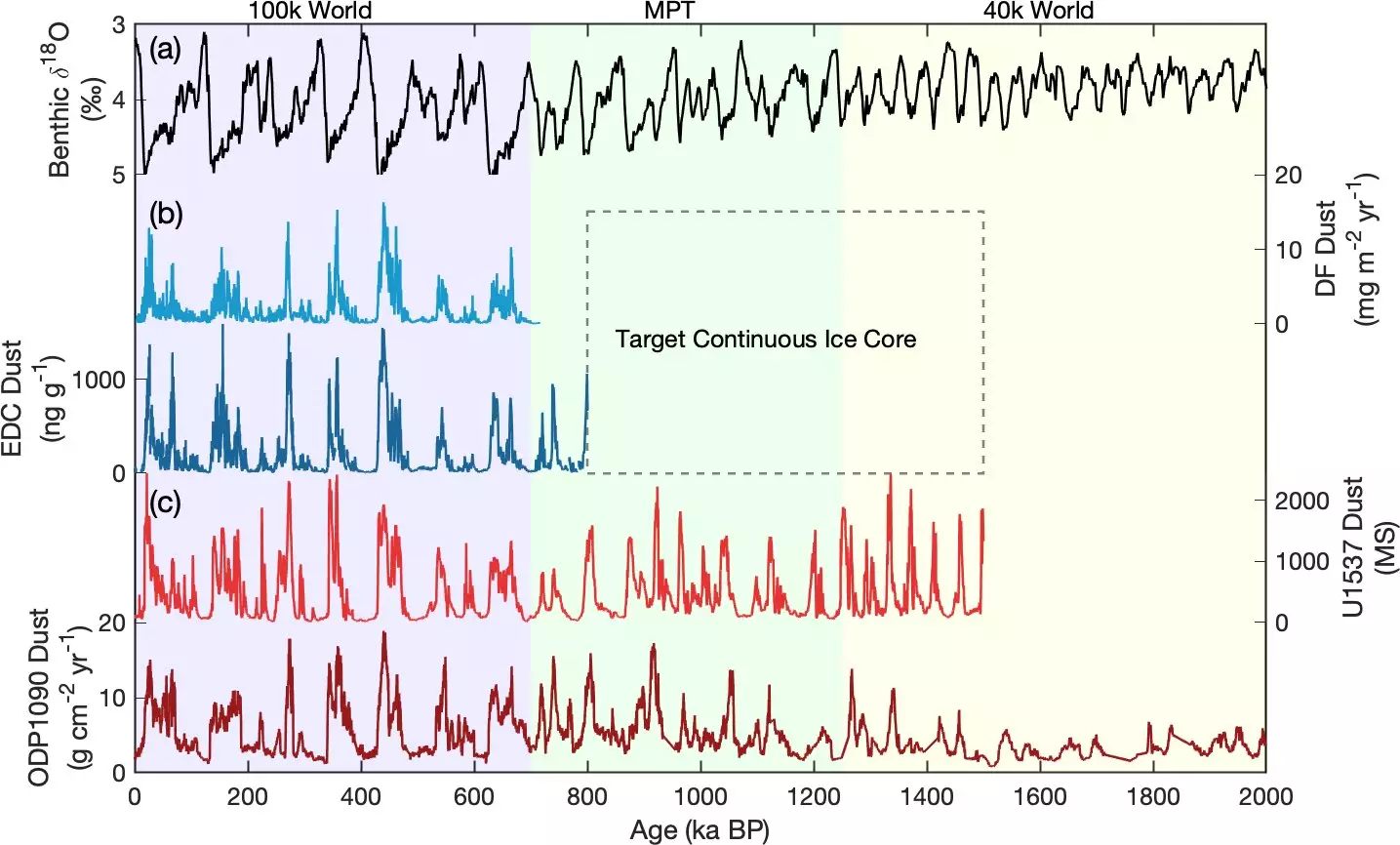Throughout the vast expanse of Earth’s history, the planet has undergone dramatic climatic transformations, including extensive ice ages that shaped the landscape as we know it. These periods of glaciation are not simply relics of the past; they influence contemporary climate patterns and are crucial to understanding climate change. Ice cores, cylindrical samples drilled from ice sheets, offer a unique window into these ancient environments. They preserve not just frozen water, but also trapped gases, geochemical constituents, and particulates, including dust that tell a rich story of Earth’s climatic conditions over hundreds of thousands of years.
One of the key indicators of glacial periods is the presence of higher dust concentrations within ice cores. Factors such as continental shelf exposure, variances in precipitation, and escalating aridity contribute to greater dust transport, enriching our understanding of how climates shift. As glaciers advance and retreat, they expose large areas of land that can unleash dust into the atmosphere. In this sense, ice cores serve as a climatic diary, providing scientists with insights into historical weather patterns and the natural processes that contributed to significant shifts in climate.
Researchers are especially interested in expanding the oldest known continuous ice record from Antarctica, currently extending 800,000 years into the past, to 1.5 million years. These ancient records encapsulate cycles of glacial and interglacial periods that repeat every ~41,000 years prior to 1.2 million years ago, shifting to irregular cycles from 700,000 to 1.2 million years ago, and then settling into ~100,000-year cycles post-700,000 years ago. A broader understanding of these cycles not only aids in historical climate reconstruction but also enhances predictions of future climate trends.
The endeavors to retrieve deeper ice cores, however, are fraught with challenges. Natural disturbances such as glacier movement can disrupt ice stratigraphy, and basal melting may obliterate valuable records. Therefore, meticulous planning and reconnaissance are essential to locate prime drilling sites. Once suitable locations are identified, advanced techniques are used to rapidly recover cores, including melting upper layers of ice to reach the deeper records more swiftly.
Recent investigations, highlighted in a publication in *Climate of the Past*, have pointed to International Ocean Discovery Program Site U1537 near South America as a promising candidate for older ice dating based on its marine dust content. Dr. Jessica Ng, from the Scripps Institution of Oceanography, and a dedicated research team compared marine dust found in Southern Atlantic Ocean ice cores with those from Site U1537 to establish an age correlation. This comparative analysis emphasizes the significance of understanding the provenance of dust and its transport across oceanic expanses—factors critical to discerning climatic narratives.
The team utilized innovative methods to mimic Oldest Ice records that could align with the marine dust records from Site U1537, also experimenting with manual offsets to verify correlation accuracies. Interestingly, while dust records from two sites matched well up to 800,000 years ago, reduced correlation beyond that point indicated a complex spatial variability in dust influx, revealing the unpredictable nature of climatic transitions.
Establishing the timeline of Oldest Ice is not merely an academic pursuit; it is essential to unraveling the mid-Pleistocene transition and its implications. The researchers posit multiple factors could have played roles, such as tectonic activity, which may have influenced glaciation through eroding regolith that allowed thicker ice sheets to form, contributing to global cooling. Yet, these hypotheses demand further exploration to ascertain the underlying mechanisms behind these intricate climatic shifts.
The significance of ice core research cannot be overstated. Climatic cycles extending over 40,000 and 100,000 years reveal feedback loops that profoundly affect our understanding of Earth’s systems. By meticulously examining the data encased within ice, scientists not only illuminate the past but also glean insights that could inform our response to modern climate change. Each new finding draws the scientific community closer to understanding the complex interrelations of dust, ice, and climate, underscoring the vast potential that lies within our frozen past.


Leave a Reply